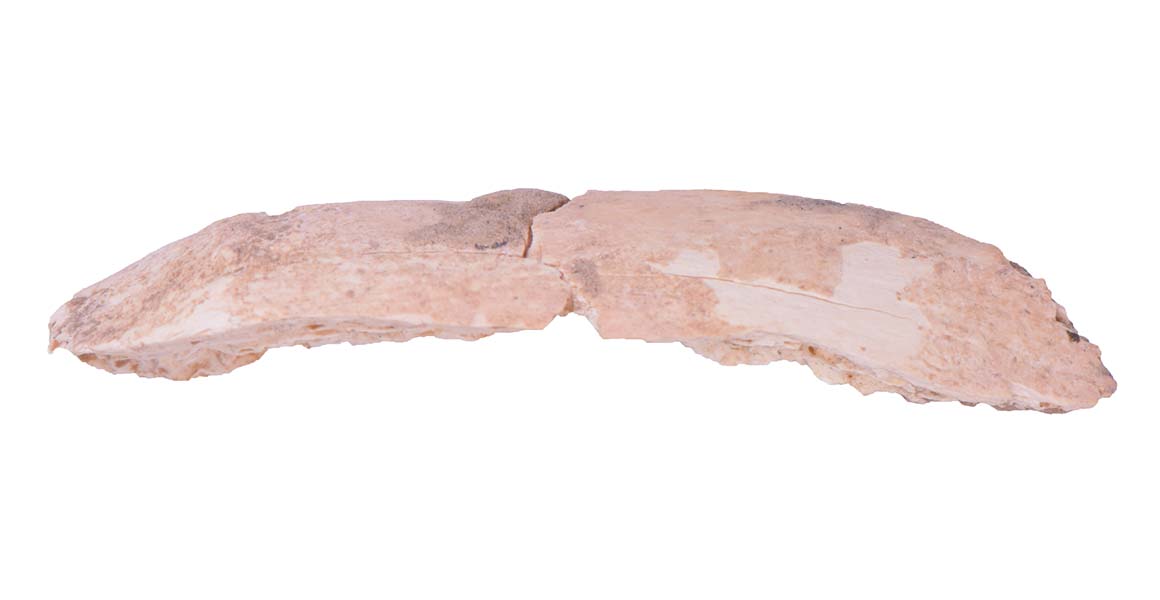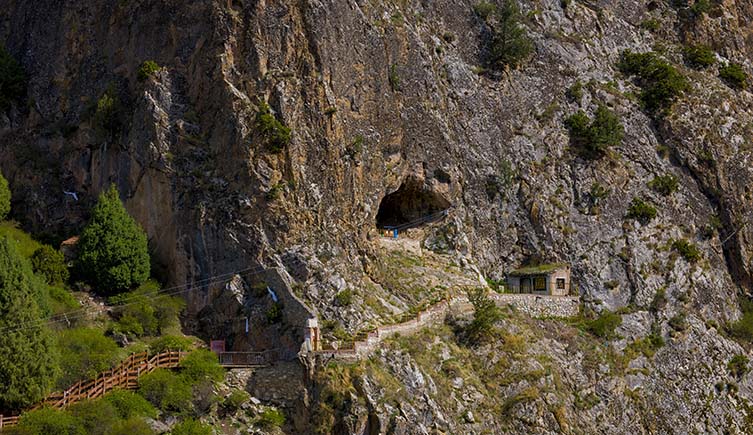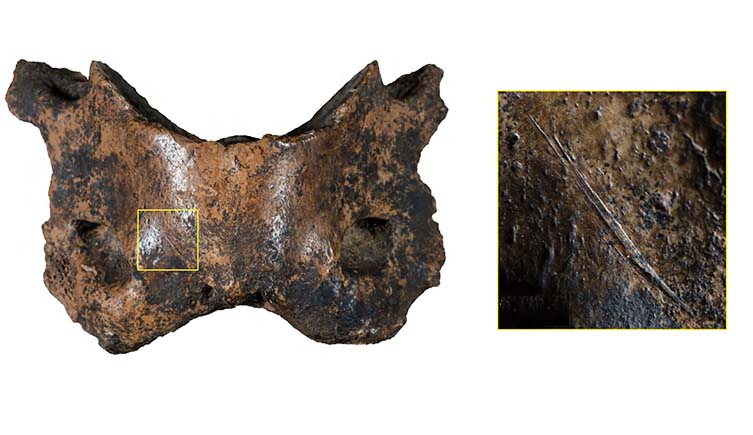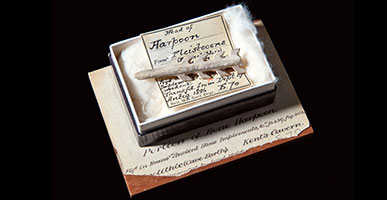A rare remnant of an extinct species of human has been discovered in a mountainside cave.
The rib bone suggests that the Denisovans may have been living in eastern Asia as recently as 32,000 years ago.

The partial rib was identified as Denisovan by comparing its proteins to those of other fossils. © Dongju Zhang’s group (Lanzhou University).
A rare remnant of an extinct species of human has been discovered in a mountainside cave.
The rib bone suggests that the Denisovans may have been living in eastern Asia as recently as 32,000 years ago.
A hoard of bones found high in the Tibetan Plateau has offered an insight into some of our most mysterious relations.
The Denisovans lived in eastern Asia for hundreds of thousands of years, but only left a handful of teeth and bone fragments behind. Among these is the Xiahe mandible, a jawbone fragment found in Baishiya Karst Cave.
New research reveals the mandible wasn’t the only Denisovan fossil left in the cave. After sifting through thousands of animal bones, a team of scientists believe they have identified the first known rib bone from the species. It has been dated to between 48,000 and 32,000 years ago.
If they’re correct, the rib provides fossil evidence that the Denisovans were still alive when our own species was expanding across Asia. This backs up previous research based on genetics, which shows that some people living in southeast Asia today share as much as 5% of their DNAopens in a new window with these extinct humans.
Dr Zandra Fagernäsopens in a new window, a co-author of the paper, says that the findings help to build up a picture of what the Denisovans were like.
“Since we only know the Denisovans from a few fossils worldwide, they are still a bit of a mystery,” she says. “Every new individual we discover therefore provides a significant piece to the puzzle of who they were, where they were living, and when.”
The findings of the study were published in the journal Natureopens in a new window.

Denisovans are thought to have been adapted to high altitudes, allowing them to live thousands of metres above sea level in Baishiya Karst Cave. © Dongju Zhang’s group (Lanzhou University).
Identifying Denisovan remains is no easy task. The species split from our lineage over 600,000 years ago, at a time in human history that’s still not well understood. And when they went extinct, hundreds of thousands of years later, these extinct humans left very little behind.
They were only named for the first time in 2010opens in a new window, following the discovery of skeleton fragments in Denisova Cave in Siberia. The cold climate of the region preserved DNA within the bones, allowing scientists to extract it and show that the Denisovans represent a distinct branch on the human family tree.
With so few fossils, most discoveries about the species have been based on their genetics. For example, it’s known that Denisovans crossbred with both Neanderthals and Homo sapiens, with their genetic legacy living on today in certain groups in southeast Asia and Oceania. This suggests that the Denisovans probably lived in southeast Asia, but there’s not a lot of fossil evidence to back that up.
While the Xiahe mandibleopens in a new window and a tooth found in Laos have both been attributed to the Denisovans, it’s not universally agreed whether this is the case. DNA hasn’t been extracted from either fossil, so there haven’t been any direct genetic matches, while there are no similar fossils at Denisova Cave to compare their shape too.
Instead, these fossils were linked to the Denisovans because they have similar proteins. It’s the same story for the Xiahe rib bone, although the authors were able to identify more protein sequences that matched with the Denisova fossils.
Along with Denisovan DNA found in the cave’s sediments, and a lack of evidence of other ancient humans living in the area, the authors believe this is enough to identify the species of human living in Baishiya Karst. Whether or not their arguments will be universally accepted remains to be seen.

Cut marks on many of the bones in the cave, like this hyena bone, show that humans were processing a variety of animal products. © Dongju Zhang’s group (Lanzhou University).
Whether the Denisovans lived there or not, the cave’s occupants appear to have eaten a wide range of animals. The paper analysed more than 2,500 animal bones found in Baishiya Karst, which accumulated over more than 100,000 years.
A large amount of the bones are believed to come from the bharal, a species of goat which still lives in the Himalayas. The cave’s occupants also ate animals which are less common or extinct in the region today, including hyenas and woolly rhinos.
Many of the animal remains show distinct cut marks and damage from humans butchering them for food. As well as eating their meat, the fossil evidence suggests that the cave’s occupants also ate the bone marrow of the animals.
What was left of the animals after eating wasn’t wasted either. Some of the teeth and bones were used to make items such as retouchers, which are thought to help shape other tools. Meanwhile, the skin was prepared as animal hide.
After millennia of occupation, the researchers believe that the Denisovans disappeared from the cave between 40,000-32,000 years ago. They hope to find further evidence of the Denisovans’ life in the region and discover why this species was driven to extinction.

Museum science is helping to answer where, when and how humans evolved.
Don't miss a thing
Receive email updates about our news, science, exhibitions, events, products, services and fundraising activities. We may occasionally include third-party content from our corporate partners and other museums. We will not share your personal details with these third parties. You must be over the age of 13. Privacy notice.
Follow us on social media